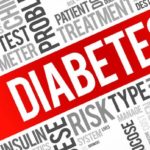My brother once told me (as we watched our sister succumbing to cancer) that “if you are born, you have a 100% chance of dying.” The other inevitable fact is that you have to die of something. Although neither of these statements is pleasant to contemplate, the reality is that at one point or another in most people’s lives, chronic disease is unavoidable. Chronic disease infiltrates the aging process, creates a quality of life issues, and can in some cases be life-altering.
Clients with chronic disease are also unavoidable. They are prevalent in the population in large numbers and need health-fitness professionals to help them prevent, manage, and live a better life with the disease. With almost every chronic disease, research clearly indicates that exercise plays a role in prevention, recovery, and management of the disease.
One of the best ways to prepare yourself to work with clients with chronic disease is to educate yourself about the etiology, progression, and prevention of the disease so that you can safely and effectively use exercise as a tool to improve function and quality of life. With the need for medical fitness becoming more respected and sought after, proper knowledge becomes essential to safe and effective intervention.
Here are 4 Chronic Disease tips to help you move toward better practice with chronic disease clients.
Proper health history and risk factor analysis is critical to the foundation of working with clients with chronic disease. Use it to discover the presence of disease and possibly multiple diseases, the risk of disease to apply prevention strategies, history of disease progression, and current function and activity levels to establish a starting point. In chapter 10 of the ACSM Guidelines for Exercise Testing and Prescription 9th edition, there is a great section with information and guidelines for working with Individuals with Multiple Chronic Diseases and Health Conditions.
Prevention of hypoglycemia (low blood sugar) is important for a safe exercise program for someone who has diabetes. If you work with someone taking insulin or an oral medication that may cause hypoglycemia, you should be aware of the symptoms and how to manage this situation, especially during exercise. Hypoglycemia occurs when glucose levels are < 70mg/dl. This condition may become worse if not treated. Prevention is the best intervention.
Symptoms may include:
- sweating
- shaking
- dizziness
- headache
- confusion
- irritability
- hunger
- personality change
- weakness
- vision changes
- seizures and/or loss of consciousness.
When working with cancer patients and survivors, avoid high-intensity resistance training for muscles located under or near a port or a PICC line. (A port is an implanted venous access port or totally implanted port used to insert treatments like chemotherapy into the bloodstream and a PICC line is a permanently inserted flexible tube for long-term intravenous medicine or treatments.) A PICC line is inserted in the upper arm or the fold in the elbow. The port is normally implanted under the skin in the upper chest (pectoralis area), but can be inserted in the back of the upper arm (triceps area) or in the abdominal area.
When working with clients with a Respiratory disease, it is important to do a longer warm up and cool down for clients with asthma, COPD, and other respiratory issues. Choose an appropriate, lower demand cardiorespiratory activity for a beginner or compromised clients such as cycling or walking. Switch to a lower demand exercise during periods of respiratory condition flare-ups. Teach the client proper breathing techniques. There are breathing exercises such as “Pursed Lip Breathing” or “Diaphragmatic Breathing” that help with shortness of breath and the anxiety, fear, and embarrassment that may be present.
Learn More
Fitness Learning Systems offers a Specialist Certificate Program for the 4 most prevalent Chronic Diseases. The Chronic Disease and Exercise Specialist Certificate Program contains 5 interactive online courses: Health Appraisal and Risk Assessment (3 hours); Healthy Heart for a Healthy Life (3 hours); Essential Exercise for Cancer Patients and Survivors (2 hours); Exercise, Diabetes, and Metabolic Syndrome (3 hours); and Respiratory Rescue-Understanding the Pulmonary Dysfunctional Client. (3 hours). Join the Medical Fitness profession and market yourself as a specialist by continuing your education with this 14-hour Specialist Certificate. All courses carry IACET CEUs.
About June Chewning
June has lead in many aspects of the fitness industry since 1978 including teaching physical education and aerobic classes, personal training, employee wellness, facility owner, college professor, and aquatic fitness professional training specialist. Currently she is president of Fitness Learning Systems and enjoys working with authors and organizations to format and develop accredited interactive continuing education eLearning courses.
By Fitness Learning Systems
Link to Courses Page: Diabetes and Metabolic Syndrome course and Chronic Disease Specialist Certificate






